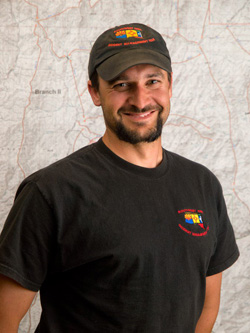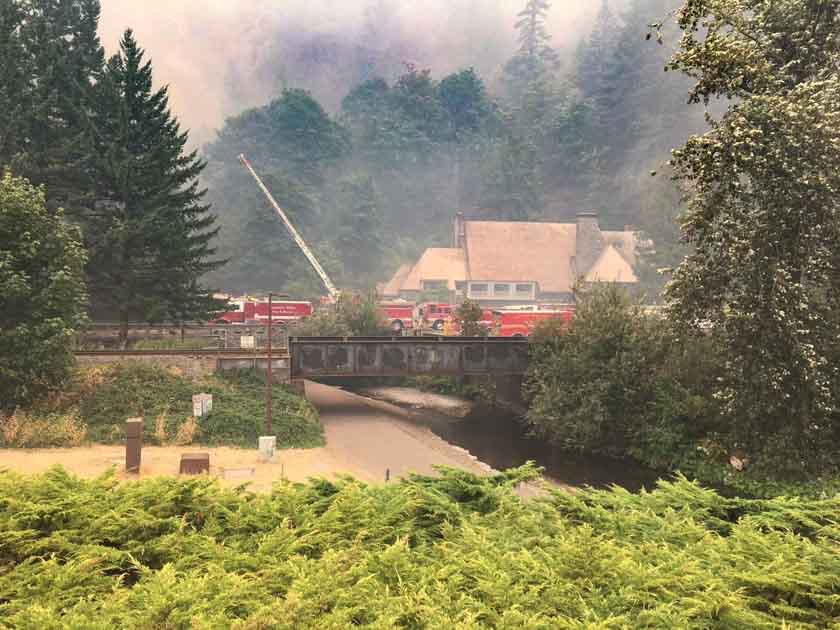Above: screenshot from the Wyoming Hotshots video.
The Wyoming Hotshots posted this video from their land navigation and crew cohesion/team building exercise during the 2018 critical training.
News and opinion about wildland fire
Above: screenshot from the Wyoming Hotshots video.
The Wyoming Hotshots posted this video from their land navigation and crew cohesion/team building exercise during the 2018 critical training.

Jay Lusher, a 15-year veteran of the National Park Service (NPS), has been named Regional Fire Management Officer of the NPS Intermountain Region. Mr. Lusher is chief of fire and aviation of Grand Canyon National Park in Arizona. He will begin his new assignment July 22, 2018.
Mr. Lusher spent 15 years at Grand Canyon. He began working in the helicopter program in 2003 and eventually oversaw one of the most complex helicopter programs in the NPS. He became Chief of Fire and Aviation in 2012 and continues to embrace the application of fire throughout the landscape of the park both with natural and prescribed fire.
“The NPS Intermountain Region fire management program is diverse and complex,” Mr. Lusher said. “I look forward to being part of the team and managing wildland fire to protect the public, park communities and maintain and restore natural ecosystem process.”
He began his fire career in Wyoming in 1995 on a rural fire department. From 1996 through 2002 he worked for the U.S. Forest Service and Bureau of Land Management throughout Wyoming including a short stint as a structural firefighter for the City of Casper.
Mr. Lusher has been member of a national type 1 incident management team since 2006, working primarily in the Southwest and California.
He will move to Denver with his wife Robin, who currently serves as Chief of Chief of Planning, Environment, and Projects at Grand Canyon.
Above: Blue flames can be visible when vegetation buried by hot lava produces methane which vents and is then ignited. Screenshot from USGS video.
What’s happening on Hawaii’s big island as the eruption of the Kilauea volcano enters its fourth week seems like it is from another world — huge mounds of red-hot lava rumbling in slow motion over homes and forests as it makes it to the sea. Where it enters the cold water it produces what is called “laze,” hydrochloric acid steam that pours into the air along with fine particles of glass. Laze can cause lung, eye, and skin irritation and caused the deaths of two people in 2000.
Since it is the wet season in Hawaii brush fires caused by the eruption are not a big concern, but the lava finds a way to burn the vegetation regardless. The USGS explains:
When hot lava buries plants and shrubs, methane gas is produced as a byproduct of burning vegetation. Methane gas can seep into subsurface voids and explode when heated, or as shown in this video, emerge from cracks in the ground several feet away from the lava. When ignited, the methane produces a blue flame. Intermittent short bursts of methane are visible in the center area of the video. Lava fountaining is visible to the right and left sides of the video.
Above: Kari Greer, wildfire photographer, at a reception for the opening of her exhibit at the University of Montana May 21, 2018.
Tuesday we had an opportunity to interview Kari Greer about her “Facing the Inferno” exhibit of wildfire photography. It is on display for three days, May 21-23, during the Fire Continuum Conference at the University of Montana in Missoula in the University Center, room 227.
The photos in the exhibit are borrowed from the main venue showing her photography which was at the Prichard Art Gallery on the campus of the University of Idaho until April 14, 2018.
Kari is a very well respected and skilled wildland fire photographer who has specialized in the field for years.
Above: 3-D map of the Eagle Creek Fire looking southeast, showing the perimeter at 7:30 p.m. PDT September 5, 2017.
A judge has ordered the teen who started the Eagle Creek Fire last summer to pay restitution totaling $36.6 million.
After a complaint from the teen’s attorney that the judgement was “absurd” District Judge John Olson said during the hearing on Monday that it was “clearly proportionate to the offense”.

The fire burned 48,831 acres in the Columbia River Gorge in September, 2017. Most of the fire was on the Oregon side of the river but a burning ember started a spot fire on the Washington side which was quickly extinguished. The fire required the extended closure of Interstate 84, forced hundreds to evacuate, and poured smoke into Portland.
The judge acknowledged that the teen will have trouble coming up with $36.6 million and allowed him to establish a payment plan. If he completes probation and does not have any additional offenses, after 10 years the court may grant a full or partial halt of the restitution.
 Technosylva has released a new free app for smart phones that can help predict fire behavior. It is called Wildfire Analyst Pocket and is available for Android phones. It will soon be on the Apple app store as well.
Technosylva has released a new free app for smart phones that can help predict fire behavior. It is called Wildfire Analyst Pocket and is available for Android phones. It will soon be on the Apple app store as well.
In a video filmed May 21, 2018, the president of the company, Joaquin Ramirez, introduces us to the app.
Technosylva is one of the companies that produce systems available now that could lead toward the Holy Grail of Wildland Firefighter Safety, tracking in real time the location of firefighters and a wildfire.